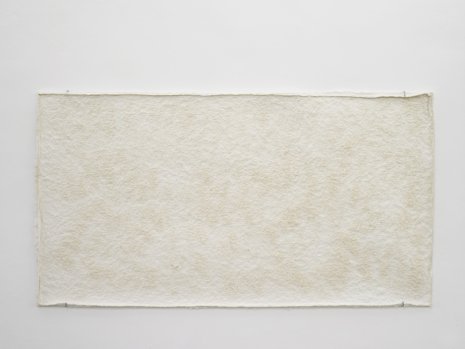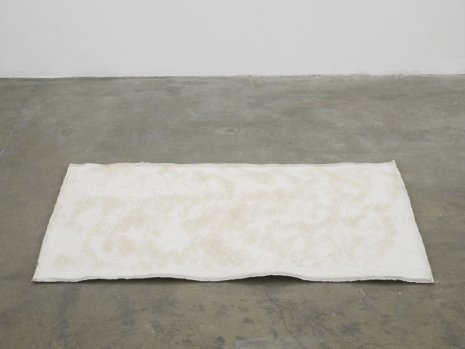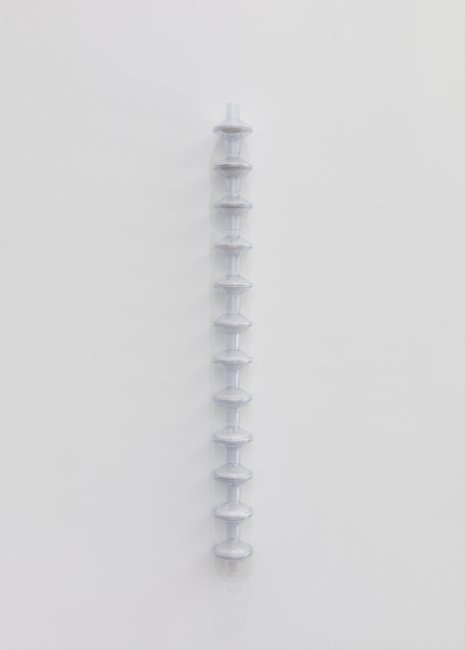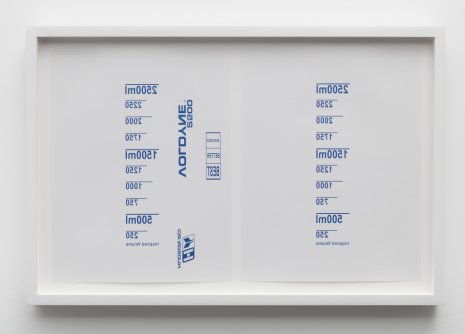In Park's Words...
Concepts of autonomy and dependency in Western political thought frequently obscure material facts of exploitation. Such concepts inform everything from assumptions about what life is and isn’t, to policies that adjudicate how and when life is and isn’t worth living. What is dependency? Autonomy? Surviving inherited definitions of autonomy and dependency is something in which we’re all engaged.
I am consistently trying to pay attention to lived experiences and aesthetic forms that challenge the formulation of a single, individual, independent person. Much of this attention is directed towards terms such as “care” or “access” that have been shaped by disabled people’s social movements' continual capacity to undo expectations and assumptions about what independence, what representation - speaking for or by oneself - and what creativity are. Something I am trying to think about with others is the understudied presence of dependency: the expectation, even necessity to exit dependency and the inability to do so. As a condition of growing out of, or connecting to, something or someone else, our debilitated autonomies, our capacious dependencies have much to say and teach us.
Art is one way to experience the simultaneity of dependency and autonomy and it can be experimentally useful and instructive. How artworks do this is a long-term interest of mine. The delay and slow duration involved in how some of my artworks have materialized over time is an important part of their making. I have found these periods of time to be indivisible from the logistical and emotional challenges I run into when trying to anticipate and communicate my day-to-day needs and desires. I have recognized in retrospect that particular artworks foreshadow rhythms and materials now present in my daily life. Artworks such as Contact Trays, Polys, and Fantasies among others teach me about some of my personal, shared dependencies. Small things such as ventilation tubing or superabsorbent diaper polymer that I used first as art materials are now in my home, stored on shelves before or in the trashcan after use.
Artworks have their own internal reasons for being while also being contextually-specific things. Their meanings are their own, which are also highly contingent and subject to change over time. Two recent exhibitions, which have since closed onsite, can be attended online through written and audio description:
Projects 195: Park McArthur, The Museum of Modern Art, New York, New York, October 27, 2018 – January 27, 2019 and online.
Kunsthalle_guests Gaeste.Netz.5456, Kunsthalle Bern, Bern, Switzerland, August 15 – October 4, 2020 and online.
What follows are descriptions of the images of artworks on this page:
Contact T, 2016
Disposable tubing, stainless steel
Height variable, tray: 3/4 × 16 3/4 × 12 inches (1.91 × 42.55 × 30.48 cm)
Photo: Andy Keate
Contact F, 2016
Single use bandages, barrier creams, heel protectors, stainless steel
Height variable, tray: 3/4 × 16 3/4 × 12 inches (1.91 × 42.55 × 30.48 cm)
Photo: Andy Keate
First made in 2015, these Contact sculptures were further developed the following year for a presentation at Chisenhale Gallery. Inspired by reading about Félix González-Torres’s development of his take-away sculptures as coming partially from being part of community groups organizing the provision of free condoms, I wondered about intermixing the take-away and its inspiration: literal condom bowls with single use items for biological life processes such as breathing, intravenous infusion, sex, evacuation. The sculptures are stacked newly each time they are presented, their form shifting slightly, and any expired items are replaced with identical or similar ones. This image shows Contact T: a stack of identically-cut sections of translucent white plastic ventilation tubing. The stack sits on a stainless steel tray on a white plinth. Two additional Contact trays made of single-use items in brightly colored packaging are partially viewable at the image’s left and right edges.
Polys, 2016 Paper, polymer
1 1/2 × 74 × 38 1/2 inches (3.81 × 187.96 × 97.79 cm)
Photo: Andy Keate
Named for the use of polymer granules that turn into an absorbent gel with the introduction of liquid, these artworks combine cotton pulp used for papermaking with polymer developed for use in disposable diapers, sanitary pads, pee pads, etc. I was inspired by Constantina Zavitsanos’ sculpture I think we’re alone now (Host), whose artistic material besides a framed foam mattress topper is eight years of sleep with many. I wanted to make a bed-sized sheets of paper that could absorb the physicality of bodily fluids as mark-making and for that mark-making to become part of the paper itself via processes of absorption. Like many biochemical inventions the embedded polymer yellows over time, so the artworks, too, are changing, growing into their degradation as part of their existence.
One image shows a sheet of paper resting on a concrete gallery floor. Another image shows a similar sheet of paper attached to a white wall by small L hooks.
Fantasies, 2020
12 used ventilator filters
27 5/8 × 2 1/2 × 2 1/2 inches (70.17 × 6.35 × 6.35 cm)
This image shows a sculpture hung vertically on a white wall. The sculpture is made from used viral/bacterial filters that keep air clean for ventilators and c-pap device users. The filters collect and catch air-borne particulates. Their input and output nozzles can interlock with one another, making a rod of interconnecting units. Engaged in a process of saving the filters after use, I look forward to making more sculptures as life goes by.
Form found figuring it out, show, 2020 Two pages
Installed according to options
Air moving through a mouthpiece, tube, and airway chambers–what’s it like inside of an incentive spirometer? Inspired by spirometers–which attempt to measure a volume of a breath of air–this artwork expands and contracts. It is made up of two-pages placed side-by-side: as many pairs as the exhibitor wishes. When on view, the artwork is also installed as a downloadable pdf on the exhibitor’s website. This image shows the pages framed inside a white frame. Both pages feature blue text on white paper. The page on the right lists volumetric measurements beginning with 250 at the bottom all the way up to 2500ml at the top. The left page shows the same measurements along with the words best, better, good from bottom to top as well as the medical branding Hudson RCI and Voldyne 2500. It is sort of difficult to read the text and numbers which are reversed as if looking out a storefront window from inside.
Artist’s website: www.carriedandheld.net







